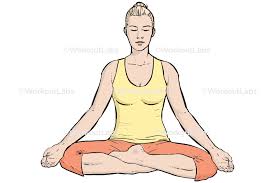How to Practice Yoga: Breathing, Postures, and Benefits for Mind and Body

Yoga is one of the oldest and most effective practices for improving both physical and mental health. Originating thousands of years ago, yoga has evolved into a discipline that combines breathing exercises, postures, meditation, and lifestyle practices. Today, millions of people across the world practice yoga not only to stay fit but also to reduce stress, improve flexibility, and achieve inner balance.
- How to Practice Yoga: Breathing, Postures, and Benefits for Mind and Body
- Why Yoga Is More Than Exercise
- How to Practice Yoga: The Basics
- The Power of Breathing
- Postures and Flexibility
- Discipline in Yoga
- Proven Benefits of Yoga
- How to Get Started with Yoga
In this article, we will explore how to practice yoga, focusing on the importance of breathing, postures, discipline, and the scientifically proven benefits of this ancient practice.

Why Yoga Is More Than Exercise
Unlike regular workouts, yoga is not just about stretching or building strength. It is a holistic discipline that connects body, mind, and spirit. Yoga integrates physical movement (asanas), controlled breathing (pranayama), and meditation to restore balance in the body and calm the mind. This makes yoga a complete system that can be practiced by anyone, regardless of age or fitness level.
Many yogis also see yoga as a lifestyle. Some follow vegetarian diets or embrace minimalism, while others focus more on the physical and mental health benefits without strict rules. The beauty of yoga is that it can be adapted to individual needs, whether for physical health, stress relief, or spiritual growth.
How to Practice Yoga: The Basics
When learning how to practice yoga, beginners often start with sitting postures. These simple movements build flexibility, improve balance, and prepare the body for deeper practice.
The foundation of yoga lies in three elements:
- Posture (Asana): Correct body alignment and movement.
- Breath (Pranayama): Deep, controlled breathing that fuels the body with oxygen.
- Focus (Dhyana): Awareness of the mind and preparation for meditation.
The Power of Breathing
Breathing is one of the most essential parts of yoga. Correct breathing supplies oxygen to every cell in the body, supports circulation, and strengthens the immune system. When practiced mindfully, it also calms the nervous system and reduces stress.
Special breathing techniques, such as bandhas (locks), train the diaphragm and abdominal muscles. These practices regulate internal pressure, improve digestion, and positively affect the function of vital organs. Research shows that proper breathing can restore balance to disrupted systems in the body.
Postures and Flexibility
Yoga postures (asanas) are designed to gently stretch muscles, improve flexibility, and strengthen joints. Unlike intense workouts, yoga movements are slow and mindful, preventing strain while encouraging balance. Over time, practitioners notice increased mobility, better posture, and reduced physical tension.
Scientific studies have confirmed that yoga-trained individuals perform movements more efficiently compared to non-practitioners. Electromyographic research has shown that yoga improves elasticity, control, and overall body coordination.
Discipline in Yoga
While yoga can be practiced casually, discipline plays an important role. Traditional yoga emphasizes consistency, clean living, and sometimes even vegetarianism. However, you do not need to follow strict rules to enjoy the benefits of yoga. What matters most is regular practice, mindful breathing, and a willingness to explore both body and mind.
Some yogis see yoga as a path to spiritual awakening, while others practice it purely for physical health. Both approaches are valid. The discipline of yoga helps individuals find balance in their daily lives, improve focus, and develop greater self-awareness.
Proven Benefits of Yoga
Decades of scientific research have confirmed the health benefits of yoga. From early laboratory studies in the 1920s to modern medical research, yoga has consistently been shown to improve both physical and mental well-being.
Some of the most important benefits include:
- Improved Flexibility and Strength: Yoga gradually loosens tight muscles and strengthens weak ones.
- Better Posture and Balance: Regular practice corrects spinal alignment and improves coordination.
- Stress Relief and Relaxation: Controlled breathing and meditation calm the nervous system.
- Enhanced Immune Function: Oxygen-rich breathing supports the body’s natural defenses.
- Digestive and Organ Health: Breathing techniques regulate internal pressure and improve digestion.
- Mental Clarity and Focus: Yoga reduces anxiety and increases mindfulness.
In fact, studies have shown that yoga practitioners not only perform physical movements more efficiently but also recover faster from stress compared to those who do not practice yoga.
How to Get Started with Yoga
If you are new to yoga, you don’t need expensive equipment or advanced skills to begin. Here are a few steps to get started:
- Choose a Quiet Space: Find a calm environment where you can focus without distractions.
- Start with Simple Postures: Begin with beginner-friendly poses such as Mountain Pose, Child’s Pose, and Cat-Cow.
- Focus on Your Breath: Practice slow, deep breathing with every movement.
- Practice Consistently: Even 10–15 minutes a day can bring noticeable benefits.
- Listen to Your Body: Yoga should never cause pain—move at your own pace.






